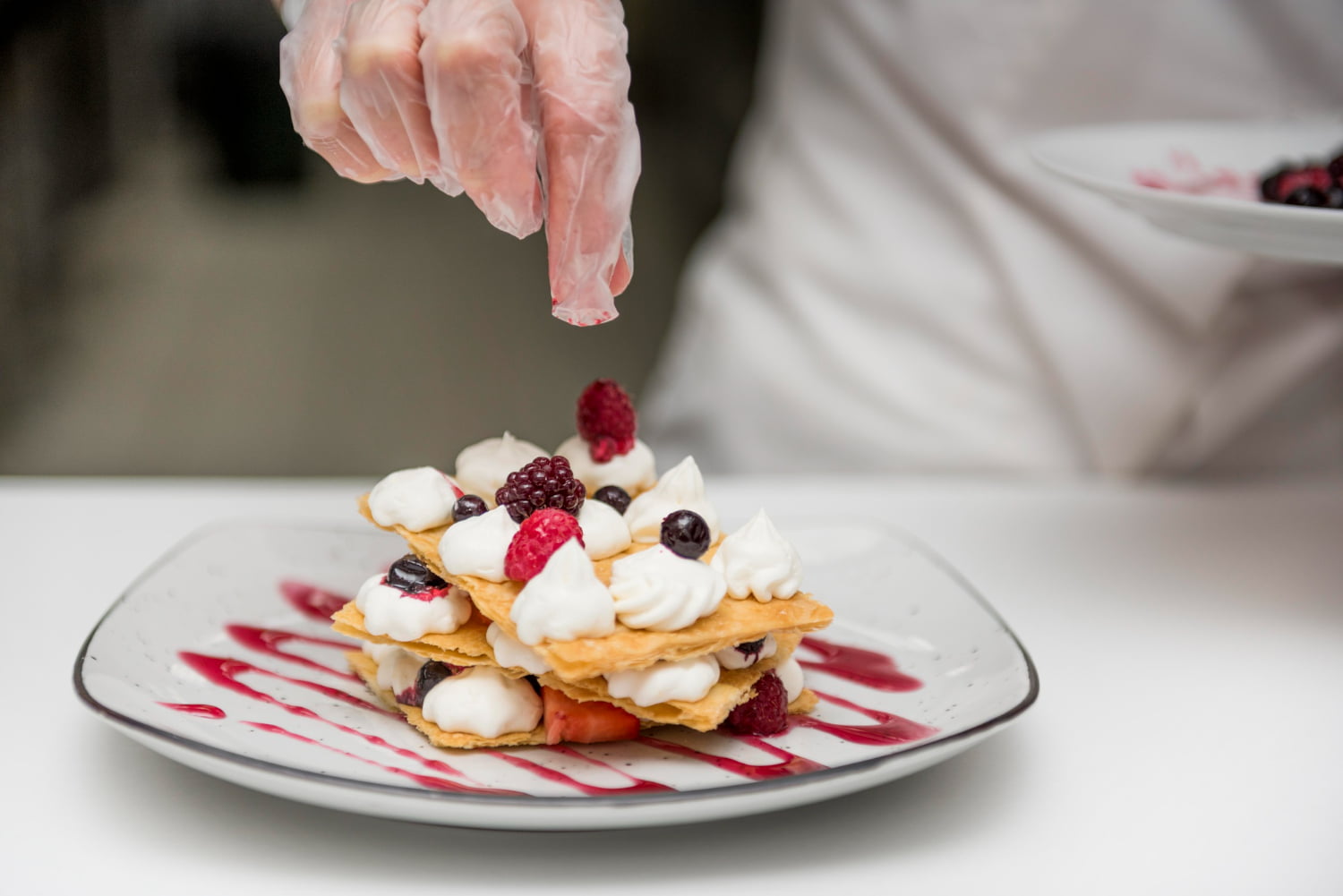Embark on a culinary odyssey where science meets artistry – welcome to the mesmerizing world of Molecular Gastronomy. In this exploration, we’ll unravel the mysteries of culinary alchemy, diving into techniques that transform ordinary ingredients into extraordinary gastronomic experiences. Join me as we unlock the secrets behind molecular gastronomy, from spherification to foaming, and discover how these avant-garde methods are reshaping the landscape of modern cuisine.
1. Molecular Gastronomy Unveiled:
At its core, Molecular Gastronomy is the marriage of science and culinary arts, revolutionizing the way we perceive and experience food. It’s not just about taste but also about texture, presentation, and the unexpected. This culinary movement invites chefs to play with the physical and chemical transformations of ingredients, transcending traditional boundaries.
2. Spherification – The Culinary Pearls:
Enter the realm of spherification, where liquids are magically encapsulated into delicate spheres. Whether creating caviar-like bursts of flavor or encapsulating a cocktail in a thin membrane, spherification adds an element of surprise to each bite. Picture a classic mojito transformed into tiny, flavorful pearls that burst on the palate, delivering an explosion of taste.
3. Gelling Techniques – A Symphony of Textures:
Mastering gelling techniques allows chefs to manipulate the texture of both liquids and solids. Agar-agar and gelatin become the conductors of a symphony of textures – from velvety gels to firm, jelly-like structures. Imagine a mango puree transformed into a delicate gel, adding a layer of sophistication to your desserts or savory dishes.
4. Foaming – Culinary Clouds in a Plate:
Foaming in molecular gastronomy is more than just bubbles. It’s an art form that introduces ethereal textures to dishes. Utilizing ingredients like soy lecithin, create foams that add lightness and visual appeal. Envision a luxurious truffle foam crowning a velvety soup, enhancing both flavor and presentation.
5. Emulsification – The Art of Culinary Bonding:
Modern cuisine thrives on emulsification. The technique creates stable mixtures of liquids that would typically repel each other. Think of a delicate vinaigrette where oil and vinegar unite harmoniously. Or a vibrant sauce emulsified to perfection, adding a silky mouthfeel to your culinary creations.
6. Molecular Mixology – A Stirring Revolution:
Extend the magic of molecular gastronomy to your glass with molecular mixology. Elevate cocktails beyond the ordinary by incorporating techniques like caviar pearls in your drink or creating alcoholic foams. Envision a gin and tonic with suspended botanical caviar or a lavender-infused cocktail crowned with champagne foam. It’s mixology as an art form.
7. Culinary Alchemy with Liquid Nitrogen:
Liquid nitrogen, the sorcerer’s tool in molecular gastronomy, transforms textures and temperatures in an instant. Use it to create instant ice creams, freeze fruits to preserve their textures, or infuse smoky flavors into cocktails with a dramatic nitrogen cloud. This culinary alchemy not only adds a theatrical element but also enhances the sensory experience.
8. Deconstruction and Reconstruction:
Break down traditional dishes into their essential components, then reconstruct them in unexpected ways. Deconstruction allows for innovative presentations and unique flavor combinations. Imagine a deconstructed tiramisu where coffee-infused sponge cake, mascarpone spheres, and cocoa powder clouds come together in a new, avant-garde interpretation.
9. Reverse Spherification – Turning the Tables:
Flip the spherification process with reverse spherification, where the liquid is encased within a gel membrane. This technique is perfect for delicate ingredients like yogurt or alcohol that can be transformed into delightful spheres without altering their original qualities. Consider a reverse spherification of a mimosa, encapsulating the essence of brunch in a single bite.
10. Smoking with Infusion – Aromatic Ambiance:
Infuse smoke into your dishes using molecular techniques, adding depth and complexity to flavors. Picture a smoked bourbon cocktail with a hickory-infused essence or a smoked vanilla panna cotta, where the aroma takes the dining experience to a new level. Smoking with infusion turns your kitchen into a sensory haven.
Conclusion:
As we conclude this journey into the magical realm of Molecular Gastronomy, remember that these techniques are not just about innovation; they’re about redefining the possibilities of flavor and texture. Embrace the science, experiment with passion, and let your culinary creations transcend the ordinary. In this alchemical kitchen, the only limit is your imagination. Happy experimenting!
Connect with Us through:


